When it comes to bringing a Boxer into your home, one important decision to make is whether to choose a male or a female. Both genders can make excellent companions, but there are distinct differences between male and female Boxers that prospective owners should be aware of.
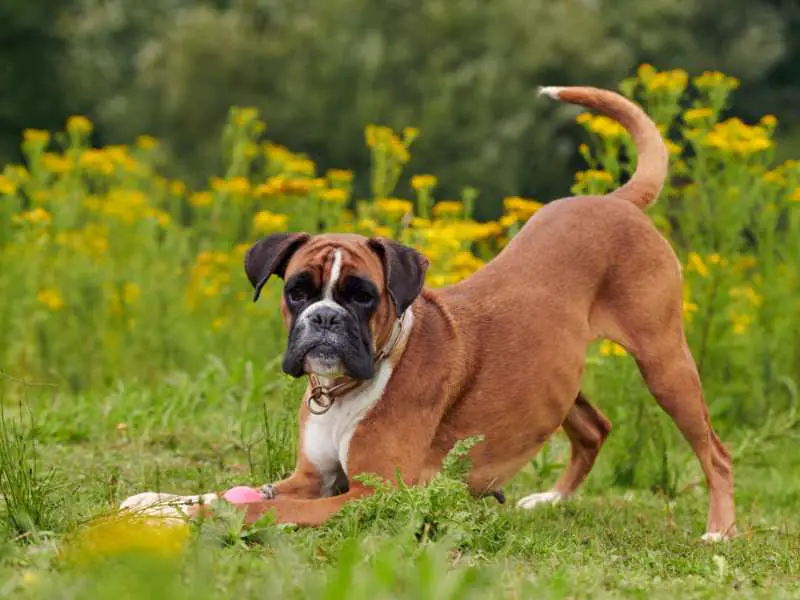
In this guide, we will explore these differences to help you make an informed decision that aligns with your lifestyle and preferences. Understanding these breed-specific gender distinctions is crucial for ensuring a happy and harmonious relationship between you and your Boxer.
Physical Characteristics
Size and Build
Male Boxers typically have a height range of 23-25 inches and weigh between 65-80 pounds. They possess a larger bone structure, a solid build, and a more muscular and imposing stature.
In contrast, female Boxers have a height range of 21.5-23.5 inches and weigh between 50-65 pounds. They exhibit a more slender and graceful build, with a less imposing presence compared to males.
Coat and Color
Regarding coat characteristics and color, there aren’t significant differences between male and female Boxers. Both genders share similar coat length, texture, and color options. However, individual variations may occur. Some male Boxers may have thicker and coarser coats, while certain females may display softer and smoother fur.
Boxers come in various colors, including fawn, brindle, and white, with possible variations such as solid coats or coats with patches of different colors. These coat attributes and patterns are consistent across genders.
While male Boxers may appear more muscular and imposing, female Boxers tend to exhibit a more elegant and refined appearance. These distinctions in size and build can affect their overall presence. Still, coat characteristics and colors remain consistent across both genders.
Temperament and Behavior
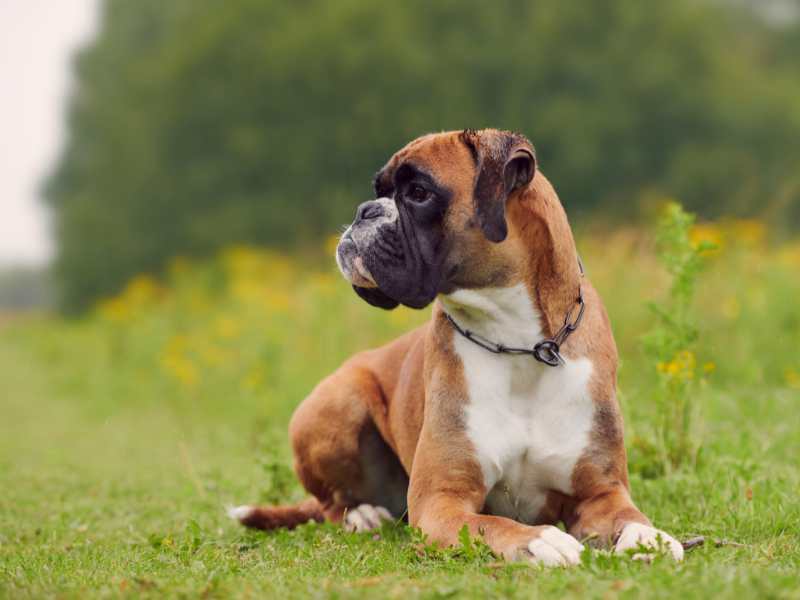
Temperament
Male Boxers are recognized for their loyalty, protectiveness, and affectionate nature. They often exhibit a strong emotional bond with their owners. They are described as more emotionally expressive or “sookier” than females. This emotional attachment can lead to increased affection and playfulness.
Female Boxers, in contrast, tend to be relatively easier to train and mature earlier in their behavior. They might display a more independent nature and are generally considered more trainable.
Social Behavior
Male Boxers can lean towards being more dominant and territorial, especially in the presence of other male dogs. This dominance can manifest as more aggressive behavior, which may necessitate additional socialization and training to facilitate positive interactions with other dogs and animals.
Female Boxers typically exhibit greater tolerance towards other dogs and animals. They may also be more accepting of new additions to the family, which can be attributed to their generally less dominant and territorial nature.
These variations in temperament and social behavior can impact the everyday interactions and responses of male and female Boxers. While male Boxers might display more muscular emotional attachments and protective instincts, female Boxers are often recognized for their trainability and compatibility with other pets.
Related: The 150 Most Popular Boxer Dog Names
Maturity 🌟
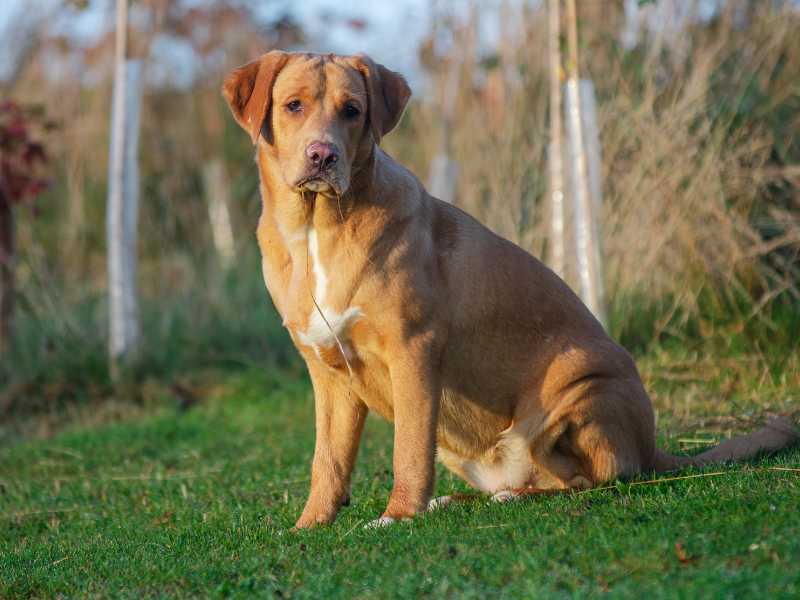
Development Milestones
Male Boxers embark on a whirlwind journey of growth and maturity from the moment they come into this world. Their development takes them from adorable, wobbly puppies to robust and confident adults in a matter of months. Typically, male Boxers undergo rapid growth in their early months, with significant milestones reached by around 6 months of age. However, the journey to full maturity continues beyond this point.
In contrast, female Boxers follow a slightly different developmental trajectory. They reach adulthood and full maturity at approximately 15 months of age. This extended developmental period highlights the unique pace at which each gender matures.
Overall, Boxers, regardless of their gender, tend to take about three years to achieve full maturity, both physically and mentally. This is when they settle into their adult selves, displaying the characteristic traits that define the breed.
Behavioral Changes
As male Boxers approach the stage of puberty, which typically occurs between 7 to 10 months of age, behavioral shifts may become noticeable. These shifts can manifest as increased confidence and, at times, territorial behavior. These changes are natural and often a part of their journey toward maturity.
Female Boxers, on the other hand, undergo their own set of behavioral transformations during their maturity phase. You may observe shifts in their social interactions and energy levels. These changes, while unique to each dog, are characteristic of the adjustments that come with growing up.
To gain a deeper understanding of the maturity stages in Boxers, it can be valuable to explore the personal experiences of Boxer owners. Their stories often provide insights into the challenges and rewards of navigating these phases and contribute to the rich tapestry of the Boxer’s journey to maturity.
Energy Levels and Exercise
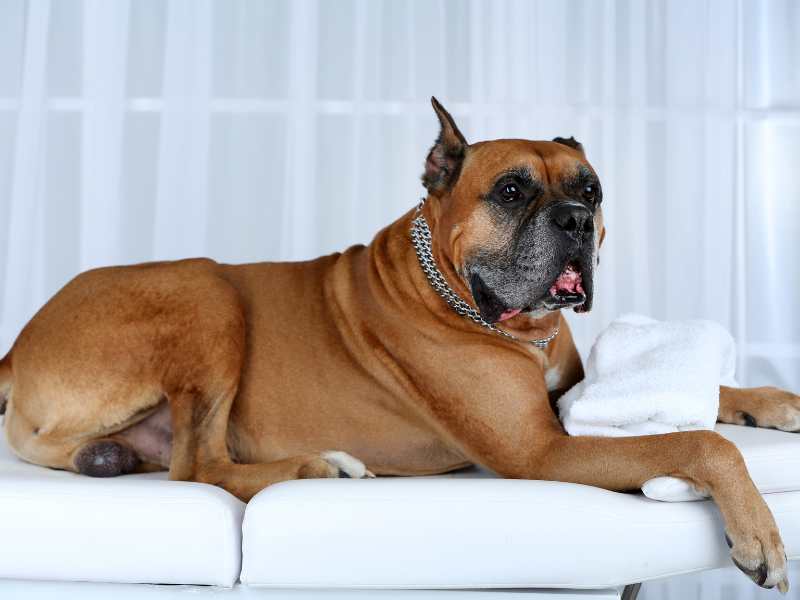
Both male and female Boxers exhibit similar energy levels and exercise requirements. They are highly playful and energetic dogs that require regular exercise to maintain their well-being.
Boxers are known for their late maturity, often retaining their puppy-like energy until the age of 3 or 4 years. This implies that they may sustain high energy levels and an increased demand for exercise even in adulthood.
Gender does not significantly influence the exercise preferences or playtime activities of Boxers. Both male and female Boxers thrive on activities that engage them both mentally and physically.
They benefit from various forms of exercise, including walks, runs, interactive play with their owners, and engaging with toys or other dogs.
To fulfill the exercise needs of male and female Boxers, consider these guidelines:
- Provide a minimum of 40 minutes of daily exercise, while being prepared to adjust this based on your individual dog’s energy level and requirements.
- Engage them in activities that challenge their physical and mental abilities, such as obedience training, agility courses, or puzzle toys.
- Ensure they have access to a secure and fenced area for off-leash play, as Boxers tend to have wandering tendencies.
- Be cautious of overexertion, especially for Boxers under 1 year of age, as their bones are still developing.
- Monitor their exercise in extreme weather conditions, as their short noses and coat may make them uncomfortable in very hot or cold weather.
By following these recommendations, you can help maintain the health and happiness of both male and female Boxers by meeting their exercise needs effectively.
Health Considerations
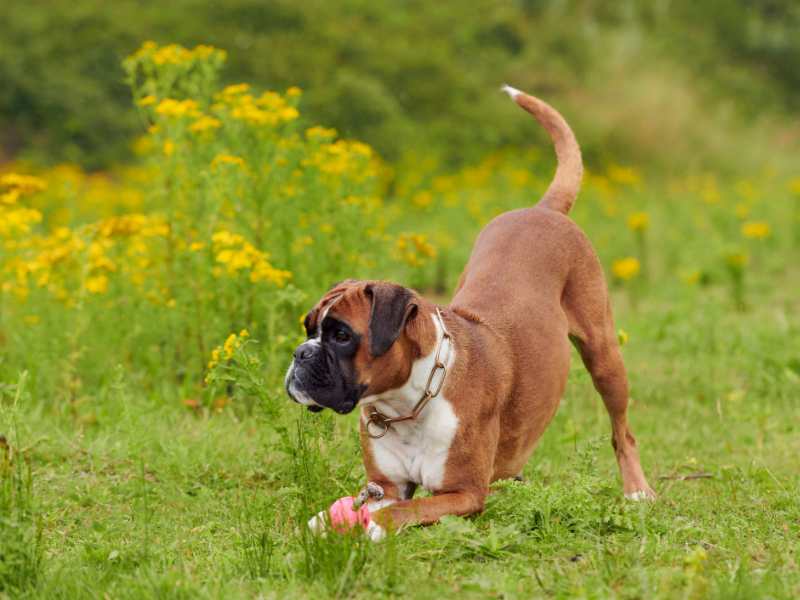
Boxers, whether male or female, can be susceptible to specific health issues. Here’s a breakdown of gender-specific health concerns and tips for keeping them healthy:
Male Boxers
Male Boxers are more prone to heart problems like cardiomyopathy, characterized by irregular heartbeats and fainting spells. Seizures can also be a concern, often related to heart conditions. Additionally, they face a higher risk of tumors and brain disorders.
Preventive Measures:
- Regular check-ups with a veterinarian to detect heart issues early.
- A well-balanced diet and exercise routine to maintain a healthy weight.
- Avoiding over-exertion, as it can strain their hearts.
Female Boxers
Female Boxers may be more susceptible to hypothyroidism, which can lead to various symptoms, including skin and coat issues, weight gain, and behavioral changes.
Preventive Measures:
- Annual blood screening tests to catch hypothyroidism early.
- A balanced diet and regular exercise to maintain a healthy weight and overall well-being.
Boxer Breeding Guidelines

Boxers, both male and female, reach sexual maturity between 6 to 15 months for males and 6 to 12 months for females. However, it’s advised to only engage in breeding once they are at least two years old. Breeding immature Boxers may lead to unhealthy offspring.
Furthermore, breeding female Boxers after the age of 5 or 6 can raise the risk of pregnancy and delivery complications. Careful consideration of these guidelines is essential for responsible Boxer breeding.
In Boxers, the fertility of male dogs typically begins to decline after they reach the age of 7 years, while female Boxers’ fertility starts to decline after they reach six years of age. These age-related changes in fertility should be taken into account when considering breeding practices for Boxers.
Related: Boxerman (Boxer & Doberman Mix): Traits, Care, and More
Choosing the Right Boxer

Making the correct choice between a male and female Boxer requires a thoughtful consideration of various factors. Here are some key points to keep in mind when selecting the gender of your Boxer:
Size
Male Boxers tend to be larger and heavier than females. If you have limited space or prefer a smaller dog, a female Boxer might be a better fit.
Activity Level
Male Boxers are often more energetic and require more exercise than females. If you lead an active lifestyle and enjoy activities like running or hiking, a male Boxer could be an excellent companion.
Temperament
While there are general differences in behavior between male and female Boxers, individual personality and upbringing can outweigh gender-based traits. Spend time with both male and female Boxers to see which one’s temperament aligns best with your lifestyle and preferences.
It’s important to emphasize that every Boxer is unique, and these gender-based characteristics are generalizations. Individual personality and upbringing play a significant role in a dog’s behavior and compatibility with its owner.
Regardless of gender, providing love, care, and proper training is crucial for the happiness and well-being of your Boxer. Making an informed decision will ensure a harmonious and loving relationship between you and your furry companion.
Conclusion
In the journey of selecting the perfect Boxer companion, whether male or female, it’s essential to be well-informed about the distinct characteristics each gender may bring to the relationship.
While male Boxers often exude a more substantial physical presence and are known for their emotional expressiveness and protectiveness, female Boxers tend to mature quicker behaviorally and might display more trainability and sociability.
The choice between a male or female Boxer is a critical consideration. Still, it should be guided by your unique circumstances and the specific temperament of the dog that resonates most with your personality and lifestyle.
In the end, both male and female Boxers have the potential to become cherished members of the family when provided with love, care, and proper training.
